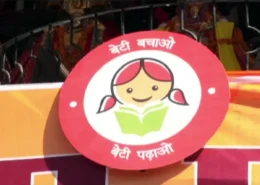Roadmap for Answer Writing 1. Introduction Briefly introduce the concept of tribal integration in post-independence India. Emphasize the importance of preserving tribal communities’ social and cultural heritage while integrating them into the mainstream society. Mention that the policy aimed to strike a balance between ...
Yes, social media had a significant influence on the 2024 Lok Sabha elections in India. Here's how: Increased Political Engagement: Social media platforms like Facebook, Twitter, and WhatsApp became crucial tools for political parties, candidates, and their supporters to engage with voters, especialRead more
Yes, social media had a significant influence on the 2024 Lok Sabha elections in India. Here’s how:
- Increased Political Engagement:
- Social media platforms like Facebook, Twitter, and WhatsApp became crucial tools for political parties, candidates, and their supporters to engage with voters, especially younger demographics.
- Parties and candidates used these platforms to share their manifestos, campaign promises, and rally support through targeted messaging and advertising.
- Viral Content and Misinformation:
- The rapid spread of viral content, including memes, videos, and news articles (both factual and fake), played a significant role in shaping public discourse and perceptions during the election.
- Efforts to counter misinformation and fact-check online claims became essential, but the sheer volume of content made it challenging to control the spread of false narratives.
- Mobilization and Coordination:
- Social media platforms enabled political parties and their supporters to rapidly organize events, rallies, and volunteer efforts, fostering a sense of community and enhancing their ability to mobilize voters.
- Platforms like WhatsApp and Telegram facilitated the formation of grassroots-level groups that coordinated campaign activities and information sharing.
- Voter Targeting and Micro-Targeting:
- Parties and candidates leveraged data analytics and targeted advertising on social media to identify and engage with specific voter segments, tailoring their messages to appeal to the interests and concerns of these groups.
- This data-driven approach allowed for more personalized and effective campaign strategies.
- Influencer Marketing:
- Parties and candidates collaborated with social media influencers, celebrities, and opinion leaders to amplify their messages and reach a wider audience, particularly among younger and more tech-savvy voters.
- These partnerships helped to build a stronger emotional connection with the electorate.
- Rapid Response and Real-Time Engagement:
- Social media enabled political parties and candidates to respond quickly to evolving events and address emerging issues, often in real-time, shaping the narrative and public discourse.
- This allowed them to stay relevant and engage with voters more effectively throughout the campaign.
While social media’s influence on the 2024 Lok Sabha elections was significant, it also raised concerns about the potential for the spread of misinformation, the impact of targeted advertising, and the need for stronger regulations and digital literacy initiatives to ensure a more informed and transparent political process.
See less

Model Answer Government's Efforts to Preserve Tribal Heritage Post-Independence Post-independence India adopted a complex and multifaceted approach to integrate tribal communities into the national mainstream while preserving their unique social and cultural heritage. This effort sought to balance tRead more
Model Answer
Government’s Efforts to Preserve Tribal Heritage Post-Independence
Post-independence India adopted a complex and multifaceted approach to integrate tribal communities into the national mainstream while preserving their unique social and cultural heritage. This effort sought to balance tribal rights with national development, as detailed below:
1. Preservation of Traditional Practices The government recognized the importance of allowing tribals to develop according to their own cultural norms. The Panchayat Extension to Scheduled Areas (PESA) Act, 1996 was introduced to protect tribal communities from external exploitation, giving Gram Sabhas an active role in decision-making processes. This act reinforced the autonomy of tribal areas, helping preserve their traditions and cultural practices while promoting local self-governance.
2. Protection of Land and Forest Rights In recognition of the tribals’ deep connection to land and forests, the government passed laws to prevent the encroachment of non-tribal people on their lands. The Scheduled Tribes and Other Traditional Forest Dwellers (Recognition of Forest Rights) Act, 2006 aimed to protect tribals’ rights over forest resources and their traditional lands. This law empowered tribal communities to maintain their sustainable livelihoods and safeguard their ecosystems from external exploitation.
3. Language and Cultural Identity The preservation of tribal languages and cultural practices was prioritized. The government supported Tribal Research Institutes, which conducted research and documentation on tribal languages, dialects, and cultural practices. These efforts ensured the survival of tribal languages and fostered a sense of pride in their cultural heritage.
4. Administrative Safeguards The Indian Constitution provides for special provisions for the administration of tribal areas under the Fifth and Sixth Schedules. These provisions aimed at ensuring self-governance and protecting tribal communities from outside interference in their local governance and development.
5. Ensuring Livelihood Security The government implemented schemes such as the Minimum Support Price (MSP) for Minor Forest Produce (MFP) to provide fair prices for the produce collected by tribals, improving their economic conditions. These measures aimed at fostering financial security while respecting their traditional ways of life.
Despite these efforts, challenges such as slow implementation and policy divergences between central and state governments hindered the full progress of tribal welfare. Nevertheless, the government’s policies aimed at integrating tribal communities while ensuring the preservation of their distinct cultural identity.
See less